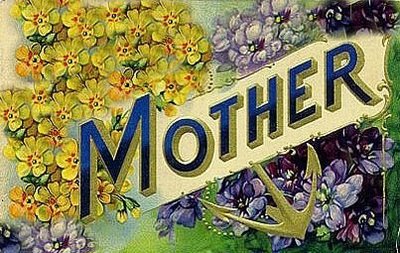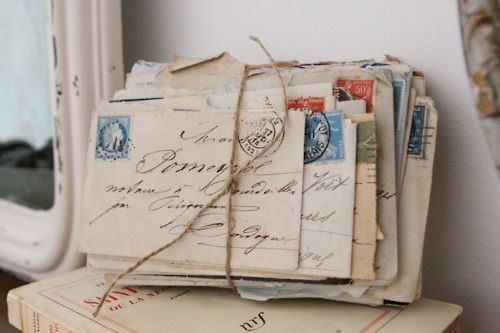The little town of Randers in Denmark might not mean much to the world...but it means a lot to me.
In this Danish town, in 1854, a baby was born. A little girl--the firstborn to her parents--and they named her Augusta Maria.
Here is the beautiful Lutheran church--Sankt Mortens--that her parents, Jens Christian Outzen and Martha Maria Christensen Outzen attended:
And would you believe we could be so fortunate as to even have a glimpse of the baptismal font in which baby Augusta was christened? Can't you just picture her parents standing there--proudly looking on?
Augusta's father, Jens, was a very accomplished cabinetmaker. He had much work in the area around where they lived, and he was able to provide a beautiful, comfortable home for his family, as well as providing for them very, very well.
This is a picture of their actual home in Randers--right there on the corner (taken in the 1940's)
It was in this very home--much less surrounded by city at the time--that Augusta grew up. Her father had his carpenter's shop in the home, as well.
And it was in this very home that the first missionaries in that area of Denmark came. And they visited the good Outzen family very often.
In fact, this painting (the original hangs in the Church History Museum in Salt Lake City), is very reputably thought to be painted IN the Outzen home. The missionary is here preaching the Gospel to the Outzens and their extended family. All of those in the painting directly coorespond to the Outzen family in age and number at that time--being about 1856.
And this little girl peering at the missionary from underneath the security of her daddy's work table? Why, it's our very own Augusta Maria!
"A Danish Mormon Missionary"--Christian Dalsgaard
In Augusta's own words:
"Father and Mother went to some of the (Church) meetings, and it wasn't long before they believed it was the true Gospel. But it was a year or more before they were baptized (on 5 April, 1856), and after that, they soon lost all of their old friends."
Augusta's parents were some of the very first to join the Church in Randers. They loved the Gospel of Jesus Christ! There are so many more stories to tell you about them and how steadfast and sacrificing they were in support of the Church there--but for now, I'll just tell you how much they loved the missionaries.
The Outzen home was ALWAYS open to the Elders of the Church, and was known to be "a good resting place for them" after all their traveling, rejection, and hard work.
(just a beautiful rural scene in Randers)
The family had a large summer garden that they loved to spend time in when the Danish weather permitted. Augusta remembered:
"We had a lovely garden with bushes and hedges and flowers and a large summer house with bushes and a table. We spent lots of our time in the garden. Father took lots of pride in keeping our house in order and worked hard to make us all comfortable and happy."
As her knowledge of the Gospel grew, so did she. I wish we had a picture of her as a young girl at this time, but I'm grateful to at least know some of the things she did. Her parents wanted her to learn and progress and become a fine lady--and every opportunity was provided her.
Here again, in Augusta's words, is a beautiful illustration of her growing years:
"I started to school when seven years old. We had to go to school all the year. Just one month vacation in the summer. I helped mother take care of the babies and do the housework, and I also helped knit the stockings for the children. I just loved to sew and do fancy work (embroidery, etc.)
In addition to English, Augusta was also taught reading, writing, arithmetic, history, geography and Bible reading. Quite a full education for a young girl!
She was baptized a member of the Church of Jesus Christ of Latter-day Saints on May 15, 1864--when she was 10 1/2 years old.
( a beautiful river in Randers)
When she was 12 1/2 years old, her father took her out of public school, placing her in a private school, where she continued her English language studies--and, as Augusta wrote: I took fancy work (for money). My teacher's name was Miss Cofod."
In addition to English, she was also instructed in dressmaking, glovemaking, knitting, crochet, tatting (lacemaking), netting and embroidery.
This piece was not done by Augusta, but is a beautiful example of classic Danish needlework that schoolgirls would have been taught around the time of her education:
She showed herself to be so skilled in all the needle arts and loved it all so much, that her father purchased a kid-glove making machine for her. (At no small expense, I'm sure!) She was so excited and was extremely grateful to her dear father for this gift! She became so proficient with it, that she sold several pairs of gloves a week!
Augusta had very wealthy relatives on her mother's side. Her Aunt Vorre used to invite Augusta to spend weekends at her palatial home in the city. This aunt bought Augusta many beautiful, expensive dresses and would spoil her while they were together.
She was very proud of Augusta, and would take her along on her social visits to show her her off to her friends and acquaintances. She was also taken on occasion to the Viborg theater--something that a young lady would, of course, love! Sounds a little like visiting a wealthy relative in a Jane Austen novel, doesn't it?!
And so our little Danish girl continued on in her dear hometown of Randers. Life was wonderful--but things would certainly get a little more exciting in her world when she turned 16...but we'll talk about that another day.























































